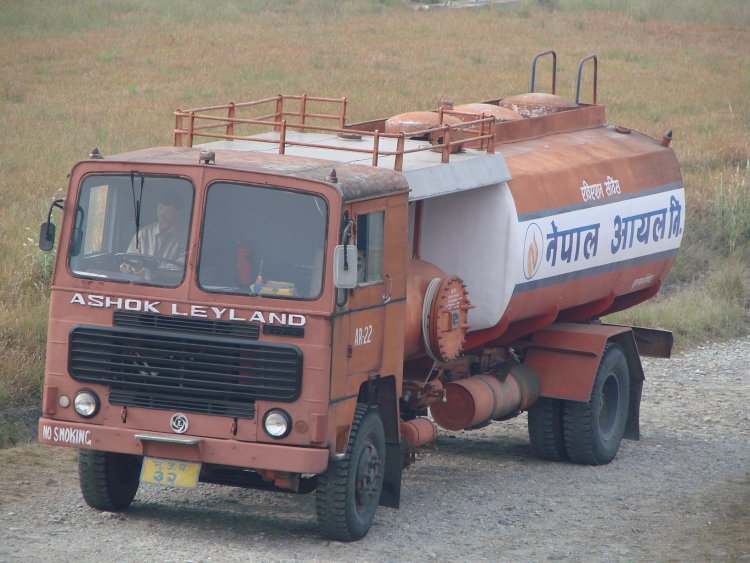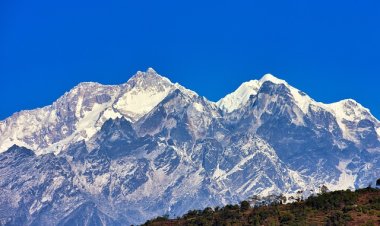Rising Petroleum Product Prices in Nepal: Factors and Implications
Understand the challenges of importing petroleum in Nepal and the strategies employed by the Nepal Oil Corporation to mitigate losses and manage fuel prices.

Based on research, petroleum products have consistently held the top position as the most imported commodity in Nepal for many years. Due to limited investment in domestic petroleum exploration, Nepal relies on importing petroleum products from other countries, primarily because Nepali people still heavily rely on vehicles. Petroleum is a highly expensive commodity, both in terms of locating its sources and extracting it, which requires billions of dollars in investment. Moreover, the process of recouping these investments after extraction also incurs additional costs in the billions. The oil and gas industry has significant operational expenses, making it challenging for a single country to extract petroleum and generate profitable sales. Nepal typically imports petroleum products from India. Although India exports these products to Nepal at around Rs. 84 per liter, the Nepal Oil Corporation (NOC) sells them at double the price and still faces financial losses.
History:
In 1960, a meeting was held among major oil-exporting countries, including Iran, Iraq, Kuwait, Saudi Arabia, and Venezuela, leading to the formation of the Organization of the Petroleum Exporting Countries (OPEC). Today, OPEC consists of over 15 member countries and is responsible for exporting more than half of the world's oil. However, these OPEC member countries are aware that relying solely on oil cannot sustain their economies, especially with the increasing prominence of electric vehicles worldwide. Consequently, countries like Dubai and Saudi Arabia have been diversifying their investments into other sectors. For instance, Venezuela, one of the founding members of OPEC, had an economy heavily dependent on petroleum. However, in recent times, its economy has suffered a near-collapse, causing a significant portion of its population to leave the country. This situation has left OPEC countries in a state of panic. During the COVID-19 pandemic, the price of oil plummeted, reaching negative values at one point, with a barrel of oil valued at -37 dollars. Although the price of gasoline has slowly started to recover post-pandemic, the losses incurred during that time are still challenging to manage. In response, oil-producing countries, including OPEC members, have contemplated ways to increase the price of gasoline. One strategy they used was to deliberately reduce the supply of gasoline. Currently, the world requires around 97 million barrels of oil per day, but OPEC only produces 30 million barrels. The tactics implemented by OPEC to restrict supply have been effective in raising prices. However, these developments have harmed Nepal and other nations relying on imported petroleum products.
There are several factors contributing to the constant increase in petroleum product prices in Nepal:
1. Taxes and levies:
Nepal's petroleum product pricing is affected by government taxes, levies, and surcharges. Taxes: customs, excise, VAT, road infrastructure Tax changes can affect gasoline prices for consumers. Imported petroleum products incur customs duties upon entry. The government imposes duties to safeguard industries and regulate imports. Taxes on petroleum products during production are called excise duties. These duties generate revenue for the government based on the volume or value of the product. VAT is a consumption tax applied at every supply stage. For petroleum products, VAT is based on the selling price percentage. Petroleum products may be taxed for road infrastructure projects. Charges fund road and infrastructure upkeep. Tax changes impact Nepal's petroleum prices. Tax changes affect retail prices. Higher taxes mean higher prices. Lower taxes mean lower prices.
2. Global Oil Prices:
Nepal, being a landlocked country, heavily relies on imported petroleum for energy. International oil prices greatly affect domestic product costs. Global oil prices fluctuate due to various factors like supply-demand dynamics, geopolitical events, and global economic conditions. International oil price changes affect Nepali citizens' daily lives and economy. Monitoring global oil price trends is crucial for predicting price changes in petroleum products in Nepal.
3. Exchange Rates:
The Nepalese rupee's exchange rate with oil-exporting countries' currencies impacts the cost of imported petroleum in Nepal. The Nepalese rupee affects petroleum prices. When the Nepalese rupee depreciates, more rupees are needed to buy foreign currency. Depreciation can happen due to changes in the currency market, the economy, or sentiment. Weak Nepalese rupees mean expensive petroleum imports. The exchange rate impacts petroleum prices in Nepal. Rupee depreciation leads to higher costs and prices for consumers. Monitoring and managing the exchange rate for stable petroleum prices is vital for Nepal.
4. Profit Margin:
Nepal's petroleum pricing is affected by taxes, NOC margins, and distribution fees. Margins affect petroleum prices for consumers. The state-owned NOC determines petroleum product margins in Nepal. Margins cover NOC's operational expenses: procurement, transportation, storage, and administration. The NOC must sustain operations and maintain infrastructure for petroleum distribution. Other entities, including oil companies, wholesalers, and retailers, add margins to cover costs and meet profit goals in the distribution chain. These entities have expenses like marketing, salaries, rental fees, and overhead.
History and current situation of Nepal Oil Cooperation (NOC):
Before 2014, Nepal employed a price-holding strategy for petrol, where the domestic price of petrol was directly linked to international prices. As a result, the Nepal Oil Corporation (NOC) consistently experienced annual losses. In 2014, the NOC implemented an automatic pricing mechanism that allowed domestic fuel prices to adjust promptly in response to international price fluctuations. This decision was made to address the global decline in oil prices at that time. Consequently, the NOC achieved profitability for the first time in its history, which had previously been marked by losses. However, at present, the NOC finds itself in a similar predicament as before, facing a monthly loss of Rs. 4.5 billion. Until the government implements changes and international oil prices decrease, the cost of fuel and oil will continue to rise. Therefore, if the prices of petroleum products increase, it should not come as a surprise, as this is expected, and the NOC will continue to suffer losses.
What's Your Reaction?








































































































